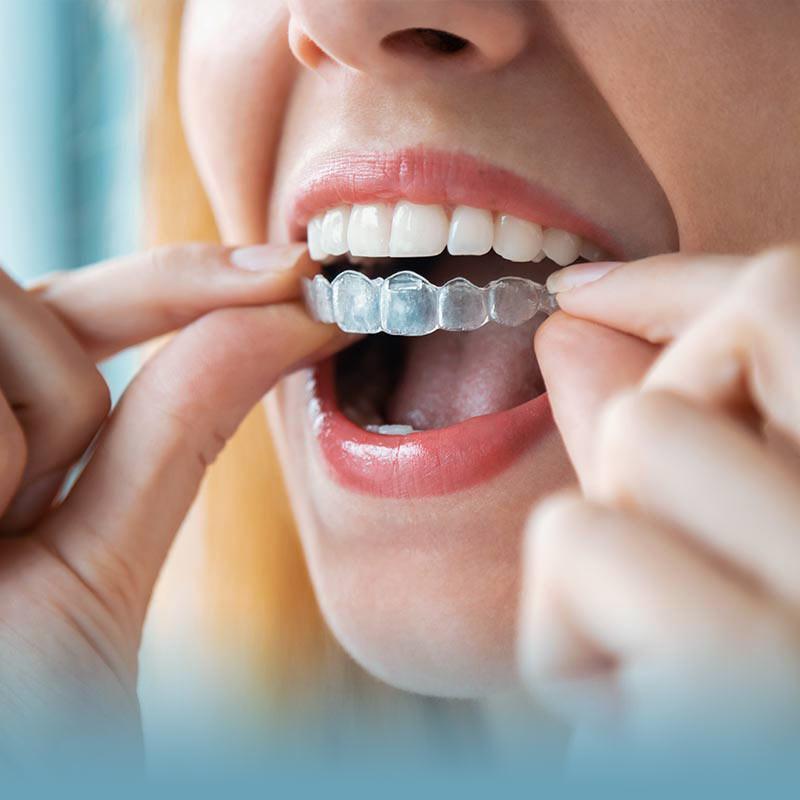The Pros and Cons of Invisalign: A Comprehensive Analysis

I feel very fortunate to be continuing in the footsteps of my father in the dental field. I have found a profession that is most rewarding and allows me to be involved in the lives of so many people and families. I am a people person who loves to talk and share stories of family and friends, and I love to hear about the... more
In the last few decades, Invisalign has become an increasingly common alternative to traditional metal braces for orthodontic treatment. Invisalign uses a set of transparent, removable aligners to progressively straighten teeth, making it a more visually acceptable and comfortable alternative for many patients. However, like any other medical procedure, Invisalign has pros and cons. In this article, we will delve into the pros and cons of Invisalign to help potential users make an informed decision.
Pros of Invisalign
1. Aesthetic appeal
One of the most significant reasons individuals choose Invisalign over traditional braces is their appearance. Invisalign aligners are made of transparent plastic, so they are barely noticeable when worn. This is especially tempting to adults and teens who might be self-conscious about wearing metal braces.
2. Comfort and safety
Invisalign aligners are made of smooth plastic, which is more comfortable than traditional braces' metal wires and brackets. Metal braces can irritate the gums and the interior of your mouth. However, there is a lower chance of these problems using Invisalign aligners, which makes treatment more comfortable.
3. Predictable treatment plan
Invisalign treatment is designed with modern 3D imaging technology. This technology generates a precise map of the patient's teeth and depicts the treatment's course from beginning to end. Consequently, patients clearly grasp what to expect and may view a virtual picture of their predicted outcomes before starting treatment.
4. Removability
One of the main advantages of Invisalign is that the aligners are removable. This implies that patients can remove them when eating, drinking, brushing, and flossing. This feature enables better oral hygiene than traditional braces since there are no brackets or wires to get your way.
5. Fewer office visits
Traditional braces require repeated visits to the orthodontist for wire adjustments and tightening. With Invisalign, patients generally receive many sets of aligners at once and only need to see their orthodontist every six to eight weeks. This can be a huge benefit for busy people who find it difficult to schedule regular dental appointments.
6. No dietary restrictions
Patients using traditional braces must avoid foods that can damage the braces or become lodged in the brackets and wires. Invisalign aligners are removable; therefore, there are no dietary restrictions. Patients can continue to enjoy their favorite foods without fear of damaging their orthodontic devices.
Cons of Invisalign
1. Discipline and responsibility required
One of the most difficult aspects of using Invisalign is that it requires the patient to be extremely disciplined and responsible. To be effective, aligners should be worn for 20 to 22 hours a day. Patients must remember to put on their aligners after eating or drinking (other than water), which can be challenging for some people, particularly teens.
2. Potential for misplacement
There is always a chance of losing your removable Invisalign aligners. This can be especially challenging for children and teens, who may be less attentive. Losing aligners can complicate the treatment process and raise costs if replacements are required.
3. Not suitable for all cases
While Invisalign can effectively cure many orthodontic difficulties, it is inappropriate for every case. Severe orthodontic issues, such as large gaps, severely crooked teeth, or complex bite disorders, can require traditional braces or other orthodontic procedures. To determine whether Invisalign is a good option for a patient, an orthodontist has to evaluate their unique needs.
4. Cost considerations
Compared to traditional braces, Invisalign is typically more costly. While the actual Invisalign cost may vary based on the complexity of the problem and the duration of treatment, patients should anticipate paying extra for convenience and aesthetics. Some people may find the higher cost problematic.
5. Initial discomfort and speech issues
When patients initially begin Invisalign treatment, they may feel some discomfort as their teeth move. The discomfort is usually moderate and short-term but can still be a bother. Moreover, some individuals may suffer small speech difficulties, such as a tiny lisp, when they initially start using aligners. This normally resolves when the patient gets used to wearing them.







